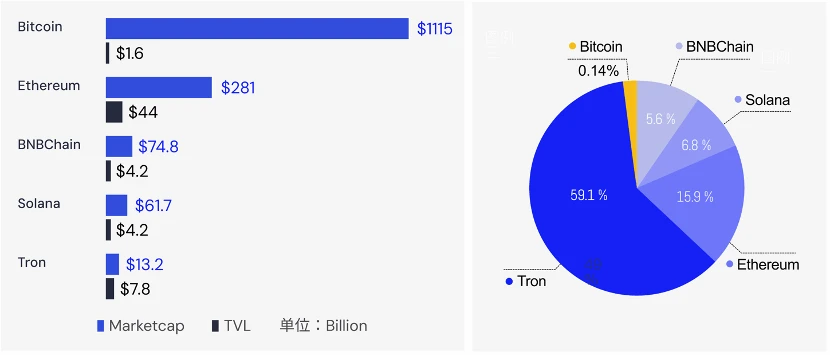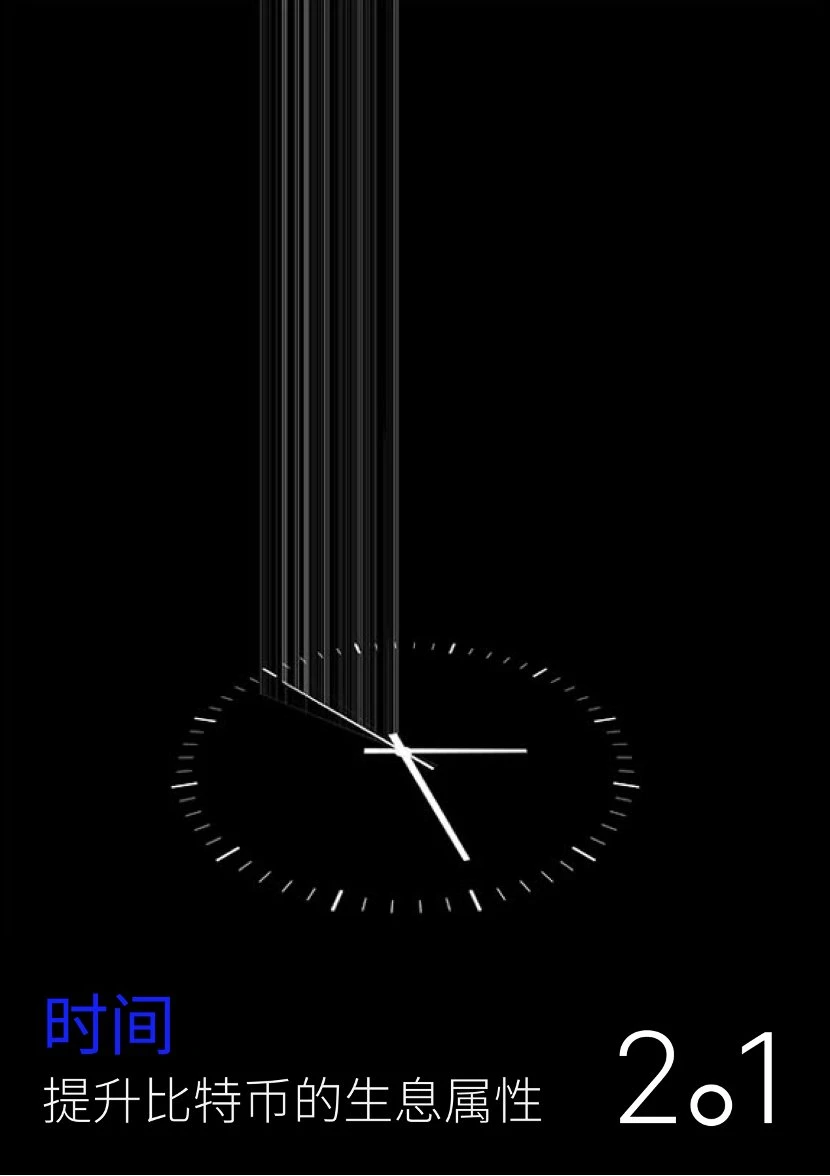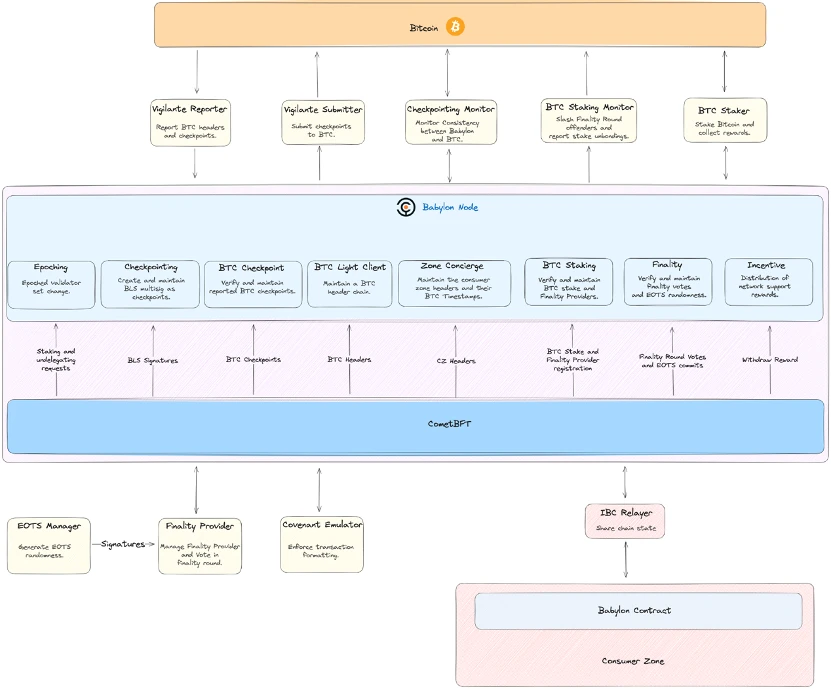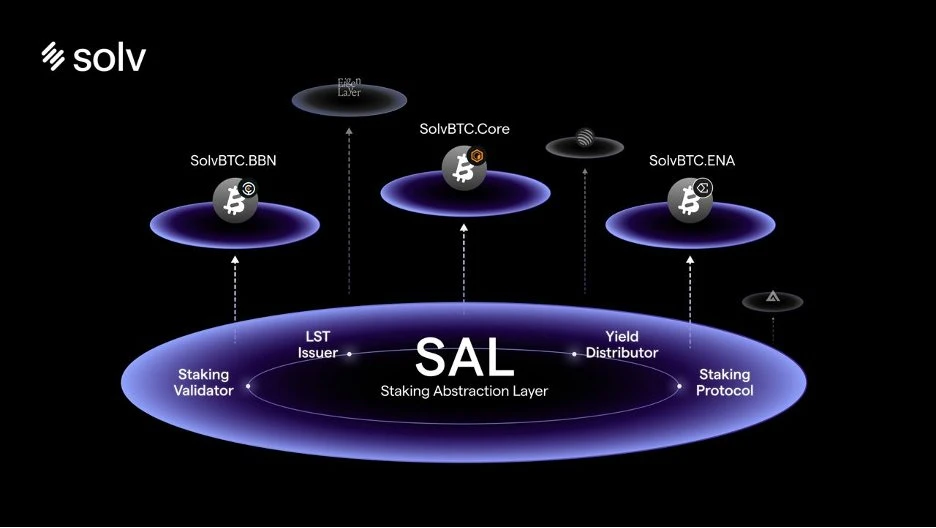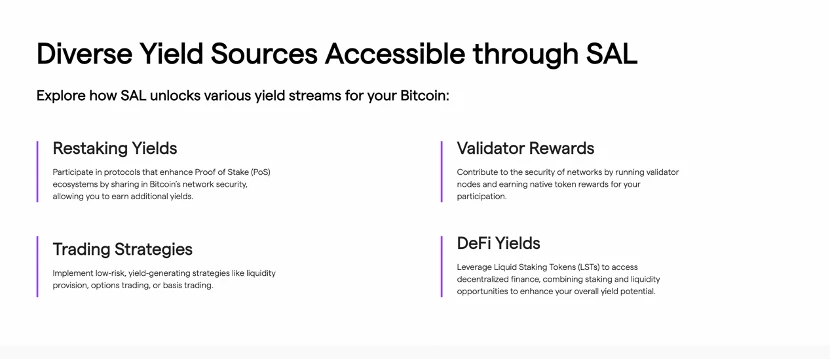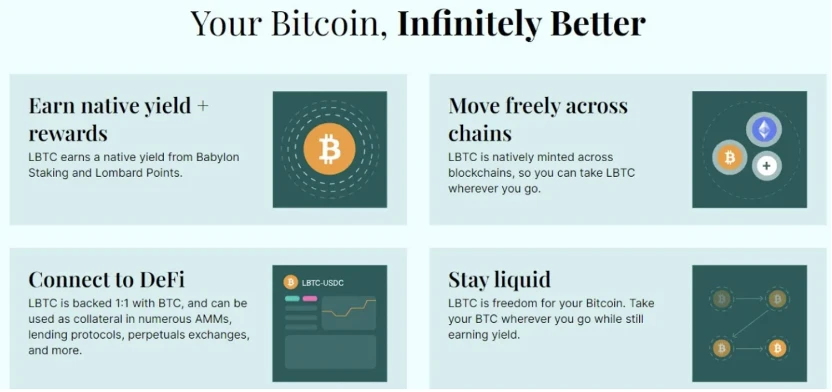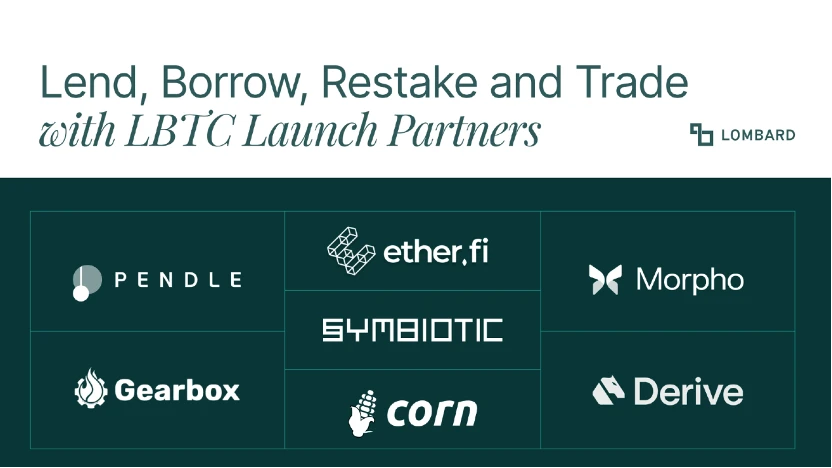Bitcoins $2 trillion conspiracy: Expanding the boundaries of time and space
ผู้เขียนต้นฉบับ: @BMANLead , @Wuhuoqiu , @Loki_Zeng , @Kristian_cy
The big event of Crypto in 2024 is coming as the price of Bitcoin approaches the $100,000 mark. Bitcoin halving and ETF approval, Trump is about to use Bitcoin as a strategic reserve. As Bitcoin goes deeper into the traditional financial deep waters, let us rethink a question:
What is finance?
The essence of finance is the allocation of assets across space and time.
Typical cross-space deployment: lending, payment, and trading.
Typical cross-time allocations: pledge, interest, options.
In the past, Bitcoin was only stored in wallets, and tended to be static in time and space. More than 65% of Bitcoin has not been moved for more than a year, and BTC should only be stored in wallets is like a thought stamp.
Therefore, BTCFi was not favored for a long time.
Although the starting point of Bitcoins birth was to hedge against the traditional financial system, and as early as 2010 Satoshi Nakamoto wrote in the forum that Bitcoin would support various possible scenarios designed by himself many years ago, including a variety of DeFi scenarios, but as Bitcoins positioning gradually approached digital gold, the exploration of Bitcoin DeFi or financial scenarios has gradually ceased.
In another timeline, Rune Christensen announced the vision of MakerDAO in March 2013, and then the first DEX on ETH, OasisDEX, was officially launched in 2016. In 2017, Stani Kulechov, who was still a student, founded AAVE in Switzerland. In August 2018, Bancor and Uniswap, which everyone is familiar with, were launched, opening the magnificent Defi Summer. This also announced that the future possibilities of DeFi were temporarily handed over to ETH at that time point.
But when the Bitcoin timeline advances to 2024, Bitcoin returns to the center of the การเข้ารหัสลับ world. The Bitcoin price reaches 99,759 US dollars, infinitely close to the 100,000 US dollar mark, and the market value exceeds 2 trillion. BTCFi has become a 2 trillion US dollar conspiracy, and peoples innovation and discussion about BTCFi have quietly emerged…
1. Bitcoin’s $2 trillion conspiracy: BTCFi
Although it was Ethereum that opened the Defi Age of Exploration, for Bitcoin, BTCFi may be late, but it will never be absent. As a Defi test field, Ethereum has given Bitcoin a lot of reference. Todays Bitcoin is like Europe in the 15th century, at the dawn of the New World.
1.1 BTC changes from a passive asset to an active asset
The continuous improvement of the Fomo attributes and active management motivation of Bitcoin holders will drive Bitcoin from a passive asset to an active asset, providing soil for the development of BTCFi.
Institutional holdings continue to increase. According to feixiaohao data, there are currently 47 companies holding $141.342 billion BTC, accounting for 7.7% of the total BTC circulation. This trend continues to accelerate after the BTC ETF was passed. Since the beginning of the year, BTC spot ETH has brought in a net inflow of nearly 17,000 BTC. Compared with early miners and coin hoarders, institutions are more sensitive to capital utilization efficiency and return rates. They not only have a higher tendency to participate, but are also likely to become active promoters of BTCfi.
The rise of inscriptions and the BTC ecosystem has made the composition of the BTC community more complex. Traditional BTC holders are more concerned about security and give it a higher priority, while new members are more interested in new narratives and new assets.
ETH DeFi has gradually embarked on its own path of sustainable development. Uniswap/Curve/AAVE/MakerDAO/Ethena have all found ways to achieve economic circulation by relying on internal or external income without relying on token incentives.
Due to multiple factors, the Bitcoin communitys interest in scalability and BTCFi has increased significantly, forum discussions have become more active, and the [Disable Inscription Proposal] proposed by Bitcoin core developer Luke Dashjr last year was not supported and was officially closed in January this year.
1.2 The improvement of infrastructure objectively paved the way
Objective technical limitations are also the reason why Bitcoin has long been regarded as only a value storage tool, and this is gradually changing. The route dispute from 2010 to 2017 ended with BTC forking into BTC and BCH, but the improvement of scalability did not stop. After the two upgrades of SegWit and Taproot paved the way for asset issuance, inscriptions began to appear in peoples careers. The widespread creation of assets has brought about the objective demand for transactions and financialization. With the emergence of technologies such as Ordinal, Side-chain, L2, OP_CAT, BitVM, etc., the construction of BTCFi scenarios has become truly feasible.
1.3 Huge demand drives development
In terms of trading volume, the diversification of assets has driven the increase in trading frequency. The Block data shows that the average daily transfer of BTC has exceeded 500k/day in the past year, of which RUNES and BRC-20 have dominated. Next, the demand for trading, lending, credit derivation, and interest-bearing has become a natural process. BTCFi can make Bitcoin a productive asset, allowing BTC to earn income from its holdings.
Source: The Block
In terms of TVL, BTC, as a cryptocurrency with an absolute advantage in market value, has extremely high potential. At present, the total locked value (TVL) of the BTC network is about 1.6 billion US dollars (already included in L2 and side chains), accounting for only 0.14% of the total market value of Bitcoin. In comparison, the ratio of TVL to market value of other mainstream public chains is much higher, ETH is 15.7%, Solana and BNBChain are 5.6% and 6.8% respectively. According to the average of the three, BTCFi still has 65 times of growth space.
The TVL to market capitalization ratio of mainstream public chains with smart contract functions is much higher: Ethereum is 14%, Solana is 6%, and TON is about 3%. Even at a ratio of 1%, BTCFi has the potential to grow tenfold.
Source: Defillama, Coinmarketcap
2. BTCFi Year 1
So in 2024, when BTC soars to 2 trillion, it also ushered in the first year of BTCFi.
Bitcoin plus finance instantly opens up 2 trillion possibilities and expands the boundaries of Bitcoin in time and space.
As we said at the forefront: the essence of finance is the allocation of assets across space and time.
Then Bitcoin Finance BTCFi is the allocation of Bitcoin across space and time.
Cross-time allocation: Improve the interest-bearing properties of Bitcoin, such as pledge, time lock, interest, options, etc., for example:
-
@babylonlabs_io opens the time dimension for Bitcoin
-
Bitcoin interest earning portal @SolvProtocol
-
@Lombard_Finance: Semi-centralization may be the best solution
-
@LorenzoProtocol with its own Pendle
-
The chain for BTCFi @use_corn
Cross-space allocation: Improve the liquidity of Bitcoin, such as lending, custody, synthetic assets, etc., for example:
-
Hosting platforms @AntalphaGlobal , @Cobo_Global , @SinohopeGroup
-
Rising Star in Lending @avalonfinance_
-
CeDeFi pioneer @bounce_bit
-
Wrapped BTC is flourishing
-
Stablecoin Rising Star @yalaorg
Financial applications have not only returned to the business of BTC ecosystem participants, but also created new possibilities. BTCFi innovative projects have begun to emerge in a spurt, forming a Bitcoin financial landscape:
Source: ABCDE Capital
Whether it is to make digital gold have interest-bearing properties or to make it more liquid, these two core functions of BTCFi are perfectly consistent with the current main narrative of BTC. Regardless of whether the market is bullish or bearish, as long as BTC remains unchanged and as long as BTC is still the most recognized digital gold in the circle, the BTCFi track is unlikely, or unnecessary to be falsified.
Take gold as an example. The value of gold is generally supported by three major factors:
-
Jewelry and industrial uses
-
invest
-
Strategic reserve requirements of central banks
In terms of investment demand, the gold ETF pushed the gold price up 7 times after it was passed 20 years ago. The reason is that before the ETF, the only channel for gold investment was physical gold, and the insurance, transportation and storage requirements involved were too high for many people. The gold ETF, a paper gold that does not require storage and can be traded like stocks, is undoubtedly a revolutionary existence, greatly enhancing the liquidity and investment convenience of gold.
Looking at BTC from the other side, BTC ETF is obviously not as revolutionary as gold ETF, because the threshold for users to trade this kind of digital gold is not high, and ETF is just a step further in terms of compliance, supervision and ideology. Therefore, the driving effect on BTC price is unlikely to be as great as gold ETF. However, BTCFi, by giving Bitcoin the time + space financial allocation attribute, makes BTC more useful than before, which is more like the jewelry and industrial use of gold. Therefore, compared with Bitcoin ETF, BTCFIi may be more helpful to the increase of BTC value and price in the long run.
2.1. Time: Improving the interest-bearing properties of Bitcoin 2.1. Time: Improving the interest-bearing properties of Bitcoin
2.1.1. Babylon opens the time dimension for Bitcoin
The most indispensable thing about the concept of BTCFI should be Babylon, because with Babylon, the concept of BTC earning interest on the chain in the true sense comes into being.
As we all know, the POW used by BTC does not have the concept of inflation/interest, so it is impossible to have a relatively certain (adjusted according to the pledge ratio curve) 3-4% increase in annual issuance income like ETHs POS. However, as Eigenlayer brought the concept of Restaking into the circle, people suddenly realized that if Restaking is icing on the cake for ETH, then for BTC, it is undoubtedly a timely help.
Of course, you can’t just throw BTC to Eigenlayer, these are two different chains. It is technically impossible to completely replicate an Eigenlayer on the BTC chain, after all, BTC doesn’t even have Turing-complete smart contracts. So is it possible to move Eigenlayer’s core Restaking for POS Security to BTC? This is what Babylon does.
In simple terms, Babylon uses existing Bitcoin scripts and advanced cryptography to simulate Bitcoin-based Staking and Slashing functions, and the entire process does not involve bridges or third-party wraps, which are common security and decentralization threats in the EVM ecosystem. Because Bitcoin scripts allow the concept of time locks, that is, allowing users to customize a lock period, during which the Bitcoin (UTXO) cannot be transferred, its function is similar to the staking of the POS chain. Babylon uses this function to prevent the BTC participating in Staking from leaving the BTC chain, but is locked in a Bitcoin Staking address through time lock technology.
Source: Babylon
BTC is locked by the script. If something goes wrong and a slashing mechanism is needed, how does Babylon do it without a contract?
This is about the advanced cryptography technology used by Babylon – EOTS (Extractable One-Time Signatures). When the signer signs two messages at the same time with the same private key, the private key will be automatically exposed. This is equivalent to the most common security violation assumption on the POS chain – at the same block height, the validator signs two different blocks. By exposing the private key when doing evil, Babylon has implemented a set of automatic slashing mechanisms in disguise.
Through the Restaking technology, Babylon is mainly used to improve the security of the POS chain. However, if you want to implement the complete Eigenlayer technology stack (such as functions similar to EigenDA), or a more complex slashing mechanism, this requires the collaboration of other projects in the Babylon ecosystem.
Babylon adopts an innovative approach: locking Bitcoin through self-custody, combined with the staking and confiscation functions on the chain, for the first time provides BTC holders with a trustless way to obtain income. Before this, BTC holders who wanted to earn income usually had to rely on financial management platforms such as centralized exchanges (CEX), or convert BTC to WBTC to participate in Ethereums DeFi ecosystem. These methods are inseparable from the assumption of trust in centralized security.
Therefore, although Babylon is benchmarked against Ethereums Eigenlayer Restaking ecosystem, due to the natural lack of BTCs Staking mechanism, we tend to regard Babylon as an important part of building the BTC Staking ecosystem.
2.1.2 Bitcoin interest earning entry Solv Protocol
When it comes to the staking niche, we have to mention another project – Solv Protocol. Solv is not a direct competitor of Babylon, but by introducing the technical architecture of the staking abstraction layer, it is able to create a variety of LST (liquidity staking token) products. The sources of income of these LST can be very diverse, for example:
-
Staking income from staking protocols (such as Babylon);
-
Revenue from POS network nodes (such as CoreDAO, Stacks);
-
Or earnings from trading strategies (like Ethena).
Currently, Solv has launched a variety of successful LST products, including SolvBTC.BBN (Babylon LST), SolvBTC.ENA (Ethena LST) and SolvBTC.CORE (CoreDAO LST), all of which have performed well. According to DeFiLlama data, SolvBTCs TVL (total locked volume) on the Bitcoin mainnet has surpassed the Lightning Network and ranks first.
Source: Solv
The interest-bearing methods include but are not limited to the following:
SolvBTC – can be minted on 6 chains, fully circulated on 10 chains, and connected to more than 20 Defi protocols to earn income
-
SolvBTC.BBN – BTC can enter Babylon and earn income through Solv
-
SolvBTC.ENA – BTC can enter Ethena through Solv to earn income
-
SolvBTC.CORE – BTC can enter Core through Solv to earn income
-
SolvBTC.JUPITER and other subsequent net value growth type yield-bearing assets
Source: Solv
Therefore, rather than viewing Solv as a BTC Staking protocol, we prefer to describe it as “BTC Yu’ebao.” Solv provides a variety of income sources, whether it is staking income, node income, or trading strategy income, allowing BTC holders to have a more flexible way of income.
What is interesting is that Solv currently has the most impressive data performance among all BTCFI protocols:
-
Wide coverage: Solv is currently circulated on 10 blockchains and connected to more than 20 DeFi protocols.
-
Innovative cooperation: For example, the cooperation between Solv and Pendle provides Bitcoin users with a fixed income APY of nearly 10%, and LP market-making income can reach 40%.
-
Wide acceptance: The number of SolvBTC holders has exceeded 200,000, with a total market value of over US$1 billion.
-
Strong reserves: SolvBTCs Bitcoin reserves have exceeded 20,000.
Based on these achievements, Solv Protocol has achieved a phased leading position in the BTCFI field and continues to iterate its products. The next focus will be on launching more types of LST products. It is reported that Solv plans to launch a new product called SolvBTC.JUP in conjunction with Jupiter, which will introduce the market-making income of Perp DEX into BTC LST products and further expand the boundaries of BTC Staking.
At the same time, Babylon provides a trustless mechanism that enables BTC holders to obtain staking-like returns. This also paves the way for projects to compete for niches similar to Lido, that is, to create LST liquid assets similar to stETH. Although Babylon has achieved the security lock of Bitcoin and provided basic returns, to further release the liquidity of BTC and increase returns, the BTC locked on Babylon can participate in DeFi applications in the EVM and non-EVM ecosystems in the form of warrant tokens. Making full use of the unique composability of blockchain will be the key to the construction of the LST niche, and SolvBTC.BBN is a successful case.
In addition to Solv, there are other heavyweight projects in the market that are also competing for the LST ecological niche, such as Lombard and Lorenzo. These LST projects are generally consistent in their technical directions such as releasing BTC liquidity and participating in DeFi income.
Solvs core advantage is that it can provide Bitcoin users with a richer range of income types, including re-staking income, verification node income, and trading strategy income. With this diverse income model, Solv provides Bitcoin users with more flexible and diverse choices.
2.1.3 BTCHub in the Move ecosystem: Echo protocol
Echo is the BTCFi center of the Move ecosystem, providing a one-stop financial solution for Bitcoin in the Move ecosystem, allowing BTC to interoperate seamlessly with the Move ecosystem.
Echo is the first to introduce BTC liquidity staking, re-staking and yield infrastructure into the Move ecosystem, introducing a new liquid asset class to the Move ecosystem. By working with the Bitcoin ecosystem, Echo seamlessly integrates all native BTC layer 2 solutions including Babylon, and supports a variety of BTC liquidity staking tokens, making Echo a key entry point for attracting new capital into the Move DeFi ecosystem.
Echos flagship product, aBTC, is a cross-chain liquid Bitcoin token backed by BTC at a 1: 1 ratio. This innovation promotes Bitcoins DeFi interoperability, enabling users to earn real returns in ecosystems such as Aptos, and aBTC will be fully supported across the Aptos DeFi network.
Echo is bringing re-staking to the Move ecosystem for the first time through its innovative product, eAPT. This will enable re-staking to secure the MoveVM chain or any project developing their own blockchain, allowing them to rely on Aptos for security and verification.
Therefore, Echo will become the BTChub of the Move ecosystem, providing the Move ecosystem with 4 Bitcoin-focused products:
-
Bridge: BTC L2 assets can be bridged to Echo, making the Move ecosystem interoperable with BTC L2;
-
Liquidity Staking: Stake BTC on Echo to earn Echo Points;
-
Re-staking: Synthesize the Move ecosystem’s LRT token aBTC, allowing Bitcoin to interoperate in the Move ecosystem and obtain multi-layered benefits;
-
Lending: Deposit APT, uBTC and aBTC, provide pledge lending services, and share the profits of the lending business with users to obtain nearly 10% of APT income.
2.1.4 Lombard: “Semi-centralization may be the optimal solution”
The core feature of Lombard is the balance between security and flexibility of its LBTC assets. Generally speaking, although absolute decentralization can bring higher security, it usually makes a greater sacrifice in flexibility. For example, the huge gap between the market value of RenBTC and TBTC and WBTC is a typical example of this trade-off. Although fully centralized management can provide the greatest flexibility, its development ceiling is relatively limited due to the assumption of trust and potential security risks. This is one of the reasons why WBTCs market value has always been relatively low in the total market value of BTC.
Lombard has cleverly found a balance between security and flexibility. While maintaining relative security, it has released the flexibility of its LBTC as much as possible, thus opening up new development space for BTC liquid assets.
Source: Lombard
Compared with the traditional multi-signature Mint/Burn model, Lombard introduces the more secure Consortium Security Alliance concept. This concept first appeared in the early alliance chain. Unlike many current DeFi projects, especially the multi-signature nodes controlled by the project party in the cross-chain bridge project, Lombards security alliance is composed of highly reputable nodes, including project parties, well-known institutions, market makers, investors and exchanges, etc., and the nodes reach consensus through the Raft algorithm.
Although this mechanism cannot be completely called 100% decentralized, its security is much higher than the traditional multi-signature model, while retaining the full-chain circulation, flexible casting and redemption characteristics of multi-signature 2/3 data notarization. In addition, complete decentralization does not necessarily mean absolute security. For example, whether it is POW or POS, its attack cost and security model can be calculated based on mechanism design and market value. Except for high-market-value public chains such as BTC, ETH and Solana, most decentralized projects may not be as secure as Lombards Security Alliance model. Through this design, Lombard achieves a balance between security and flexibility, providing users with a reliable and efficient BTC liquidity solution.
In addition to the design of the security alliance, Lombard also uses CubeSigner, a hardware-supported non-custodial key management platform. There are strict policy restrictions in various aspects such as preventing key theft, mitigating violations, hackers and internal threats, and preventing key abuse, adding another lock to the security of LBTC.
The $16 million seed round led by Polychain undoubtedly announced the richness of Lombard’s resources in the industry, which will be of great help to the node reputation of its Consortium and the subsequent docking of Defi and other public chain projects. LBTC will inevitably be one of the strongest competitors of WBTC.
Source: Lombard
2.1.5 Lorenzo with his own pendle
Compared with Lombards unique advantage in asset security, Lorenzo, as the Babylon LST entrance of Binance Investment, also shows extremely attractive characteristics.
In the current round of DeFi innovation, most traditional DEX and lending protocols still continue the inertia of DeFi Summer, or are living off the old capital. After the collapse of Terra, the stablecoin track, except for Ethena, which can be barely regarded as a relative innovation, the rest of the innovations seem lackluster. The only track worth paying attention to is LST (liquidity pledge token) and LRT (liquidity re-pledge token), which benefited from the LST effect brought about by Ethereums transformation to POS and the leverage effect stimulated by Eigenlayer Restaking.
In this field, the biggest winner is undoubtedly Pendle. It is no exaggeration to say that the vast majority of interest-bearing assets in the Ethereum ecosystem eventually flow to Pendle. The design of separating principal and interest brings a new way of playing to DeFi: users who want to control risks can obtain a complete hedging mechanism through Pendle, while aggressive players who pursue higher returns can increase their returns by leveraging in disguise.
Lorenzo obviously hopes to integrate all the best in this field. After Babylon opened the staking function, its LST product has the principal and interest separation operability similar to LRT assets such as stETH, Renzo, and EtherFI. Lorenzos LST product can be split into two tokens: the liquidity principal token LPT (stBTC) and the income accumulation token YAT. Both tokens are freely transferable and tradable, and holders can use them to obtain income or withdraw pledged BTC respectively. This design not only improves the flexibility of assets, but also provides users with more investment options.
Source: Lorenzo
Through this design, Lorenzo unlocks more possibilities for participating in DeFi based on Babylon staking BTC. For example, LPT and YAT can establish trading pairs with ETH, BNB and USD stablecoins respectively, providing arbitrage and investment opportunities for different types of investors. In addition, Lorenzo can also support lending agreements around LPT and YAT, as well as structured Bitcoin income products (such as BTC fixed-income financial products). In other words, Lorenzo can learn from and implement most of the current innovative gameplay on Pendle.
As one of the few Bitcoin ecosystem projects that Binance has personally bet on, and the only LST project with Pendle attributes in the current BTCFI track, Lorenzo is undoubtedly worthy of the markets attention. This project not only expands the boundaries of BTC liquidity, but also introduces more flexible income management and investment methods to the DeFi ecosystem, providing investors with more diversified choices.
2.1.6 Chain Corn for BTCFi
Corn is the first Ethereum L2 project to use Bitcoin as Gas, aiming to provide users with a variety of financial services, including lending, liquidity mining and asset management. The chain is completely centered around the financial needs of Bitcoin, and its uniqueness lies in that it maps Bitcoin (BTC) to the networks native Gas token BTCN, allowing Bitcoin to be more widely used in the Ethereum ecosystem.
Core Features:
BTCN โทเค็นs:
Corn introduced the BTCN token as the gas fee for transactions on the Corn network. BTCN can be considered a Bitcoin mapping in ERC-20 format, similar to wBTC, but different in technical implementation. The benefits of using BTCN as Gas include reducing transaction costs, increasing the efficiency of Bitcoin usage, and creating new value capture opportunities for Bitcoin.
Ecosystem “Crop Circle”:
Corn proposed an ecosystem concept called Crop Circle that aims to recycle the value of Bitcoin in a variety of ways to generate additional income. Users can stake BTCN to obtain network income, participate in liquidity mining, lending, and develop BTCN-based derivatives markets.
Token economic model:
Introducing $CORN and $popCORN. $CORN is the base token that users can obtain by staking BTCN or participating in liquidity provision; $popCORN is a governance token obtained by locking $CORN, giving users the right to participate in governance and receive additional rewards. This model encourages users to hold tokens for a long time and enhances community participation through dynamic weights and locking mechanisms.
By bringing Bitcoin into the Ethereum ecosystem, Corn provides an innovative L2 solution designed to create more yield opportunities for Bitcoin holders.
2.2. Space: Improving Bitcoin’s Liquidity
2.2.1 Hosting Platforms Antalpha, Cobo, and Sinohope
Although decentralization is the absolute political correctness in the circle, if we exclude the black swan event of FTXs collapse, the leading centralized trading/custodial/financial service platforms in the circle actually perform much better than most decentralized platforms in terms of fund security. The losses caused by hacking of non-custodial wallets/Defi protocols each year are an order of magnitude higher than those of centralized custodial platforms.
Therefore, the leading Bitcoin custody and financial service platforms also play an indispensable role in releasing Bitcoin liquidity and giving Bitcoin the function of allocation across time or space.
Take the following three examples:
Antalpha – has the largest Bitcoin community in the circle and is a strategic partner of Bitmain. Its ecological product Antalpha Prime revolves around the development of the BTC ecosystem and provides institutions with hardware energy financing services in BTC production, such as mining machine financing, electricity financing, BTC custody storage MPC solutions, etc.
Cobo – I think everyone in the circle knows the name of Shenyu. The Cobo custodial wallet was co-founded by Shenyu and Dr. Jiang Changhao. So far, there are more than 100 million addresses + 200 billion US dollars in transfers. Now Cobo has MPC, smart contract wallets and other solutions. It is a one-stop wallet provider trusted by many institutions and users.
Sinohope – A licensed listed company in Hong Kong, in addition to wallet solutions, it also provides a one-stop full-stack blockchain solution, including L1/L2 browsers, Faucets, basic Dex, lending, NFT ตลาด Place and other comprehensive services.
Several platforms have a large number of real B-side users, and their security level has always been online, so in fact many Dei protocols have cooperated with the above-mentioned platforms. Here, the concepts of centralization and decentralization are not so clear-cut. Everything starts from the perspective of security and trust, and finds a relatively stable balance between technology and commercialization.
2.2.2 Avalon, a new lending platform
Avalon is a decentralized lending platform that focuses on providing liquidity to Bitcoin holders. Users can borrow Bitcoin as collateral, and Avalon uses smart contracts to automate the lending process. Avalon offers fixed lending rates as low as 8%, making it attractive in the competitive DeFi market.
Focus on Bitcoin: Avalon has launched BTC layer 2 including Bitlayer, Merlin, Core, and BoB, focusing on providing lending services to Bitcoin holders, meeting the liquidity needs of Bitcoin users.
Collateral management: Avalon adopts an over-collateralization mechanism, where users need to provide Bitcoin exceeding the loan amount as collateral to reduce the risk of the platform.
Data performance: The platform has currently exceeded 300M TVL and is currently actively cooperating with a number of BTCFi projects such as SolvBTC, Lorenzo, SwellBTC, etc. to expand its user base.
2.2.3 CeDeFi Pioneer Bouncebit
BounceBit is an innovative blockchain platform focused on empowering Bitcoin assets. Through the integration of centralized finance (CeFi) and decentralized finance (DeFi), as well as the strategy of restaking, it transforms Bitcoin from a passive asset to an active participant in the crypto ecosystem.
BounceBit Features:
BTC Re-staking: BounceBit allows users to deposit Bitcoin into the protocol and earn additional income through re-staking. This increases the liquidity and income opportunities of assets. Users can deposit various types of on-chain Bitcoin assets into BounceBit, including native BTC, WBTC, renBTC, etc.
Dual-currency PoS consensus mechanism: BounceBit uses a hybrid PoS mechanism of BTC+BB (BounceBit native token) for verification. Validators accept both BBTC (Bitcoin token issued by BounceBit) and BB tokens as collateral, which enhances the networks resilience and security while expanding the participant base.
BounceClub: BounceBit provides the BounceClub tool, which allows users without programming knowledge to create their own DeFi products.
Liquidity Custody: BounceBit introduces the concept of liquidity custody to keep pledged assets liquid and provide more profit opportunities.
This is different from the traditional lock-up model and brings greater flexibility to users.
BounceBit provides more profit opportunities for Bitcoin holders through its innovative re-staking model and dual-currency PoS consensus, and promotes the application of Bitcoin in the DeFi ecosystem. Its liquidity custody and BounceClub tools also make DeFi development simpler and more user-friendly.
2.2.4 Yala, the rising star of stablecoin
Yala is a stablecoin and liquidity protocol on BTC. Through its self-built modular infrastructure, Yala allows its stablecoin $YU to flow freely and securely between various ecosystems, releasing BTC liquidity and bringing huge financial vitality to the entire crypto ecosystem.
Core products include:
-
Overcollateralized stablecoin $YU: This stablecoin is generated by overcollateralizing Bitcoin. The infrastructure is not only based on the Bitcoin native protocol, but can also be freely and securely deployed in EVM and other ecosystems.
-
MetaMint: The core component of $YU, enabling users to easily mint $YU in various ecosystems using native Bitcoin, injecting Bitcoin liquidity into these ecosystems.
-
Insurance derivatives: Provide comprehensive insurance solutions within the DeFi ecosystem to create arbitrage opportunities for users.
Yalas range of infrastructure and products serve its vision – to bring Bitcoin liquidity to various crypto ecosystems. Through $YU, Bitcoin holders can earn extra income in various cross-chain DeFi protocols while maintaining the security and stability of the Bitcoin mainnet; through the governance token $YALA, Yala achieves decentralized governance of various products and ecosystems.
2.2.5 The flourishing Wrapped BTC
WBTC
Wrapped Bitcoin (WBTC) is an ERC-20 token that connects Bitcoin (BTC) to the Ethereum (ETH) blockchain. Each WBTC is backed by 1 Bitcoin, ensuring that its value is pegged to the price of BTC. The launch of WBTC enables Bitcoin holders to use their assets in the Ethereum ecosystem and participate in decentralized finance (DeFi) applications. This greatly improves the liquidity and use cases of Bitcoin in the DeFi field.
WBTC has always been the leader of Wrapped BTC, but on August 9, WBTC custodian BitGo officially announced that its joint venture with BiT Global plans to migrate WBTCs BTC management address to the joint venture multi-signature. On the surface, it was an ordinary corporate cooperation, but it caused an uproar because BiT Global was actually controlled by Justin Sun. MakerDAO immediately launched a proposal to reduce the size of WBTC collateral, requiring the WBC-related collateral in the core vault to be reduced to 0. The markets concerns about WBTC have also given new opportunities to the new Wrapped BTC.
BTCB
BTCB is a Bitcoin token on Binance Smart Chain that allows users to trade and use it on BSC. BTCB is designed to increase Bitcoin liquidity while taking advantage of BSC’s low transaction fees and fast confirmation times.
Binance is actively expanding the functionality of BTCB and plans to launch more decentralized finance (DeFi) products related to BTCB on BSC. These new products will include lending, derivatives trading, etc., aiming to enhance the use value and liquidity of BTCB. The application of BTCB on BSC has been supported by multiple DeFi protocols, including Venus, Radiant, Kinza, Solv, Karak, pStake and Avalon. These protocols allow users to use BTCB as collateral for operations such as lending, liquidity mining and stablecoin minting.
Binance hopes to enhance BTCBs market position through these measures and promote the wider application of Bitcoin in the BSC ecosystem. The introduction of BTCB not only provides new usage scenarios for Bitcoin holders, but also injects more liquidity into BSCs DeFi ecosystem.
dlcBTC (now iBTC) @ibtcnetwork
iBTC is a Bitcoin asset based on discrete logarithmic contracts (DLC) technology, designed to provide users with a secure and privacy-preserving way to create and execute complex financial contracts. Its core feature is complete decentralization. Users do not need to rely on third-party custody or multi-signature mechanisms when using dlcBTC, ensuring that users have full control over their assets, thereby reducing the risks brought by centralization. In addition, the security of iBTC benefits from its unique self-packaging mechanism. Users Bitcoin is always under its control, and only the original depositor can withdraw funds, which effectively prevents the risk of assets being stolen or confiscated by the government.
iBTC also uses zero-knowledge proof technology to enhance the privacy and security of transactions. Users can perform complex financial transactions in contracts without having to disclose the specific details of the transaction, thereby protecting personal information. Through this innovative mechanism, iBTC enables Bitcoin holders to participate in decentralized finance (DeFi) activities while maintaining ownership and control of their assets.
iBTC is the most decentralized solution among all Wrapped BTCs, which can solve the problem of opacity of centralized custody during the commercialization process.
In addition to the above Wrapped BTC solutions, there are also various BTC solutions such as FBTC, M-BTC, SolvBTC, etc.
IV. Conclusion:
It has been 15 years since the birth of Bitcoin. Bitcoin is no longer just a digital gold, but a $2 trillion financial system. Batch after batch of builders are expanding the boundaries of Bitcoin and extending it into a new track – BTCFi. We have the following judgments:
1. The essence of finance is the allocation of assets across time and space. Typical cross-space allocations include lending, payment, and trading. Typical cross-time allocations include pledge, interest, and options. As the market value of Bitcoin reaches 2 trillion US dollars, the demand for cross-time and space allocation of Bitcoin has gradually emerged, forming the BTCFi scenario.
2. Bitcoin is about to become the national reserve of the United States, and will further become the allocation asset of the country and institutions, which will form a large number of institutional-level financial demands around Bitcoin, such as lending, staking, etc., and generate institutional-level BTCFi projects;
3. The improvement of the underlying infrastructure such as Bitcoin asset issuance, second-layer network, and pledge also paves the way for the BTCFi scenario;
4. The TVL of the Bitcoin network is approximately US$2 billion (L2 and side chains are included), accounting for only 0.1% of the total market value of Bitcoin, while Ethereum is 15.7% and Solana is 5.6%. We believe that BTCFi still has room for tenfold growth.
5. BTCFi focuses on two major directions of Bitcoin: 1. Improving the interest-bearing properties of Bitcoin, with representative projects including Babylon, Solv, Echo, Lombard, Lorenzo, Corn, etc.; 2. Improving the liquidity of Bitcoin, with representative projects including Wrapped BTC, Yala, Avalon, etc.
6. With the development of BTCFi, Bitcoin will change from a passive asset to an active asset; from a non-interest-bearing asset to an interest-bearing asset.
7. Compared with the history of gold, the launch of gold ETFs 20 years ago pushed the price of gold up 7 times. Its essence is to transform gold from a passive asset into a financial asset, and more financial businesses can be carried out based on gold ETFs. Today, BTCFi also gives Bitcoin the financial attributes of time and space, improving Bitcoins financial scenarios and value capture. In the long run, it has a huge impact on the value and price of Bitcoin.
This article is sourced from the internet: Bitcoins $2 trillion conspiracy: Expanding the boundaries of time and space
On November 6, according to data from the Stand With Crypto website initiated by Coinbase, a total of 247 candidates who support cryptocurrency won seats in the House of Representatives, and only 113 members opposed to cryptocurrency. The Stand With Crypto website also shows that the Senate is also biased towards supporting cryptocurrency, with 15 supporters and 10 opponents. Coinbase CEO Brian Armstrong praised the results of the congressional election as a watershed moment for cryptocurrency, writing on Twitter: Welcome to the most cryptocurrency-supportive new members of Congress in U.S. history. The House of Representatives has more members and represents diversity, and usually initiates legislation, while the Senate is smaller and more conservative, and usually deliberates proposals initiated by the House of Representatives. Since both the House of Representatives and…




